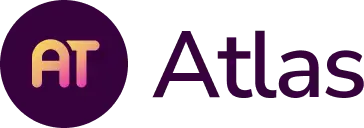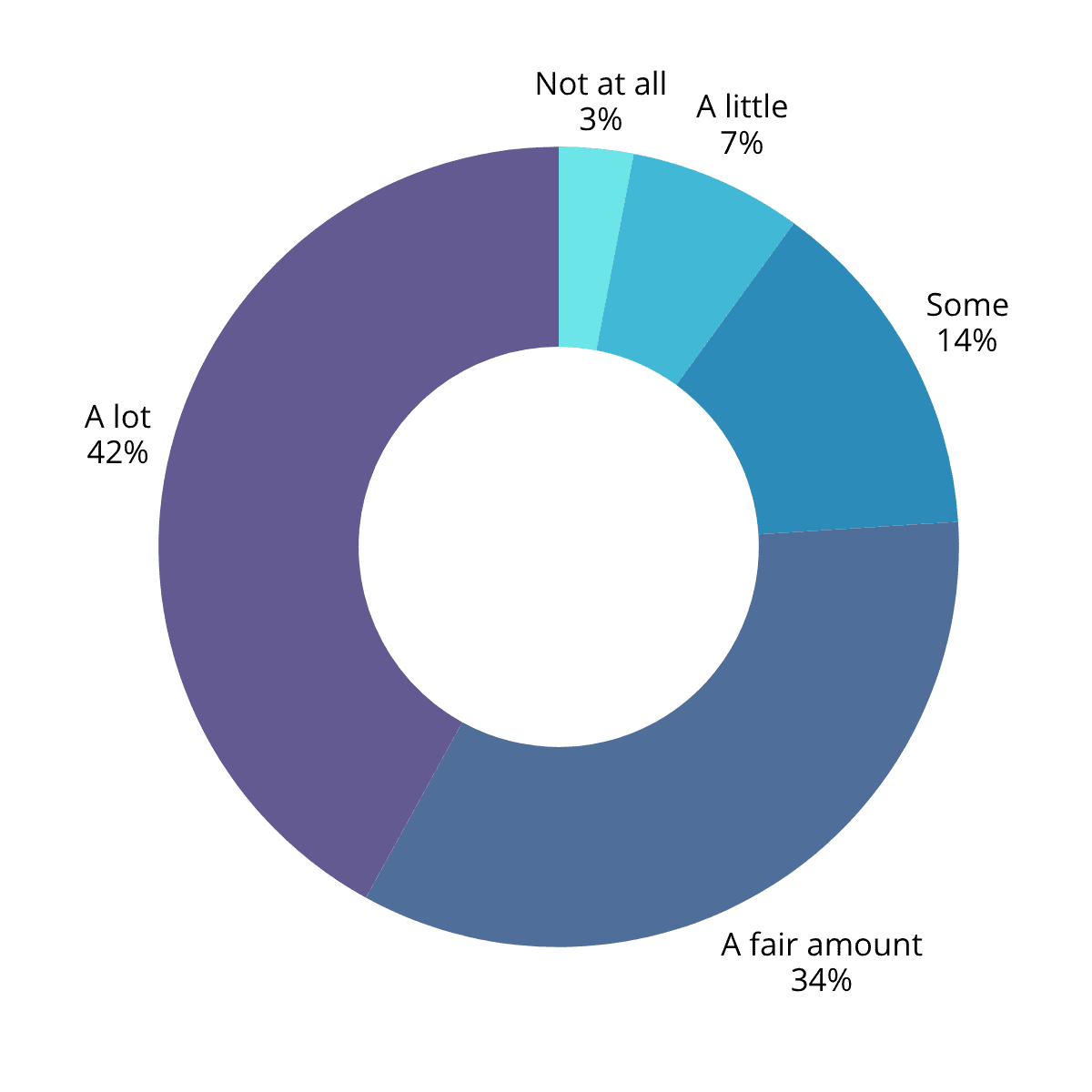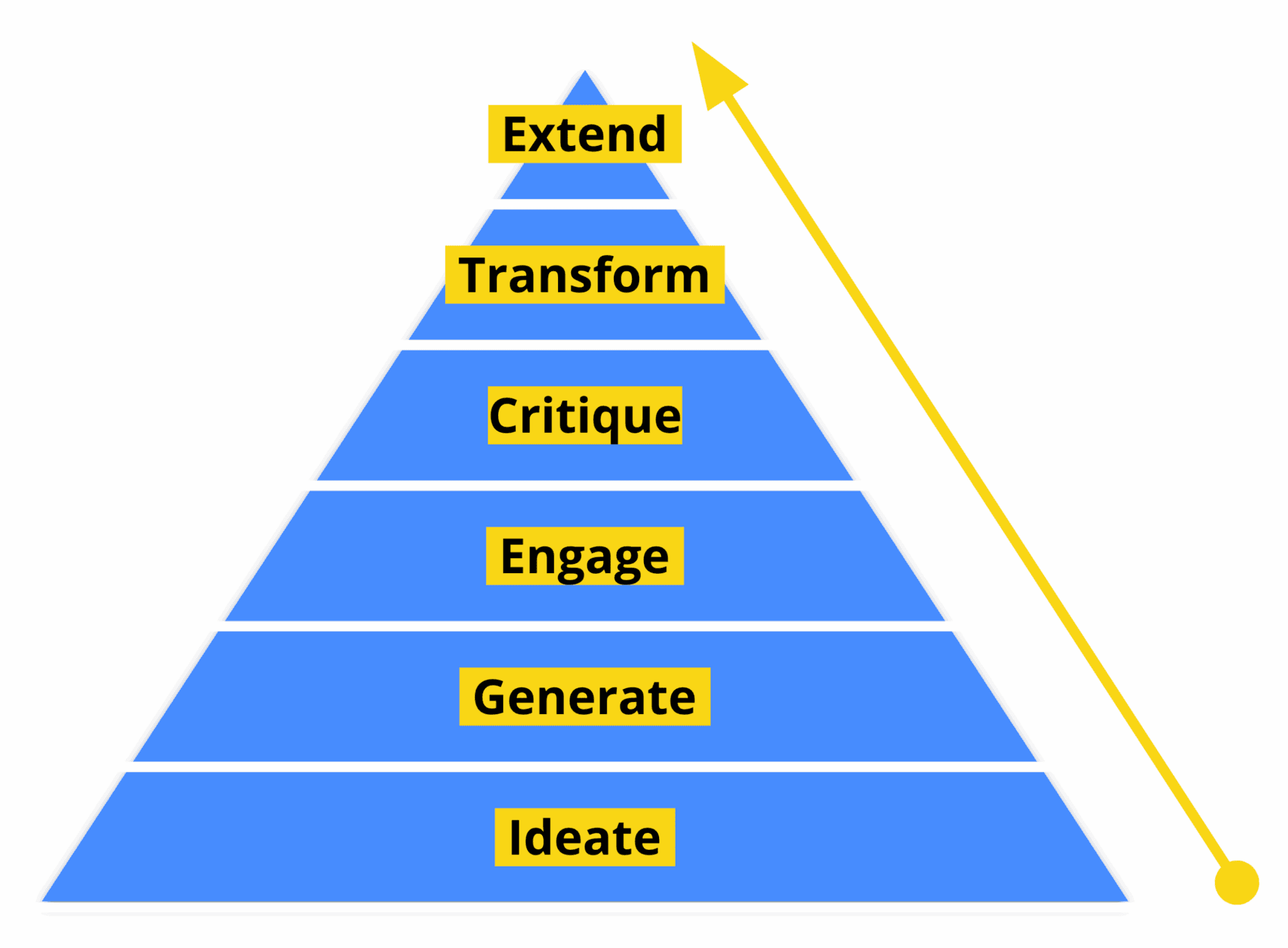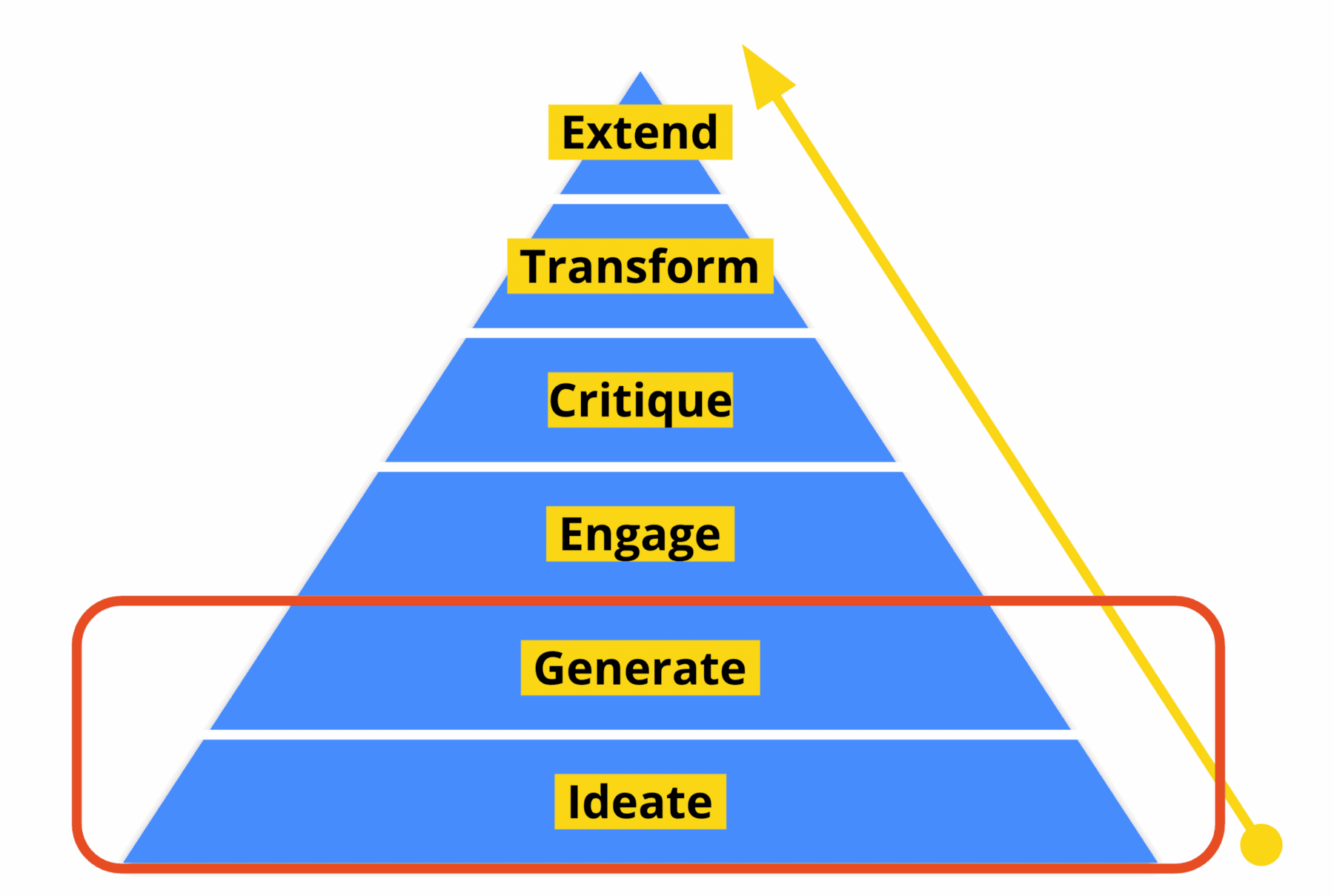In a world where artificial intelligence is rapidly reshaping how we teach and learn, educators are asking: How do we use AI responsibly and effectively in the classroom? This post is adapted from an IB Global workshop where we explored how to use AI in Curriculum Planning.
Key Takeaways:
- Understand how AI programs function
- Consider the purpose and ethical use of AI in curriculum work
- Explore prompt-generation frameworks for high-quality results
- Articulate best practices for integrating AI into your own teaching
The Ethics of AI: What’s Cheating and What’s Learning?
Which of these would you consider cheating?
- Student plugged prompt into AI, copied response, and submitted
- AI created a response. Student read, edited, adjusted, and submitted
- Student created multiple AI responses, used the best parts, edited, and submitted
- Student wrote first draft, then used AI for feedback before revising
- Student consulted internet/AI for ideas, then wrote and submitted
- Student wrote all content independently
Now ask yourself:
- Which of the above are relevant to our students’ future?
- Which would you use in your own professional work?
Adapted from Matt Miller, DitchThatTextbook.com
AI in the Classroom Today
Based on a December 2024 survey by the EdWeek Research Center, these results capture the perspectives of teachers, principals, and district leaders on how artificial intelligence is shaping education today—and how they expect it to transform teaching over the next five years. The findings offer a snapshot of real-world attitudes toward AI from educators on the front lines of curriculum planning and instruction.
Q: How, if at all, has artificial intelligence changed your job of teaching?
Q: Over the next five years, how—if at all—do you expect artificial intelligence to change the job of teaching?
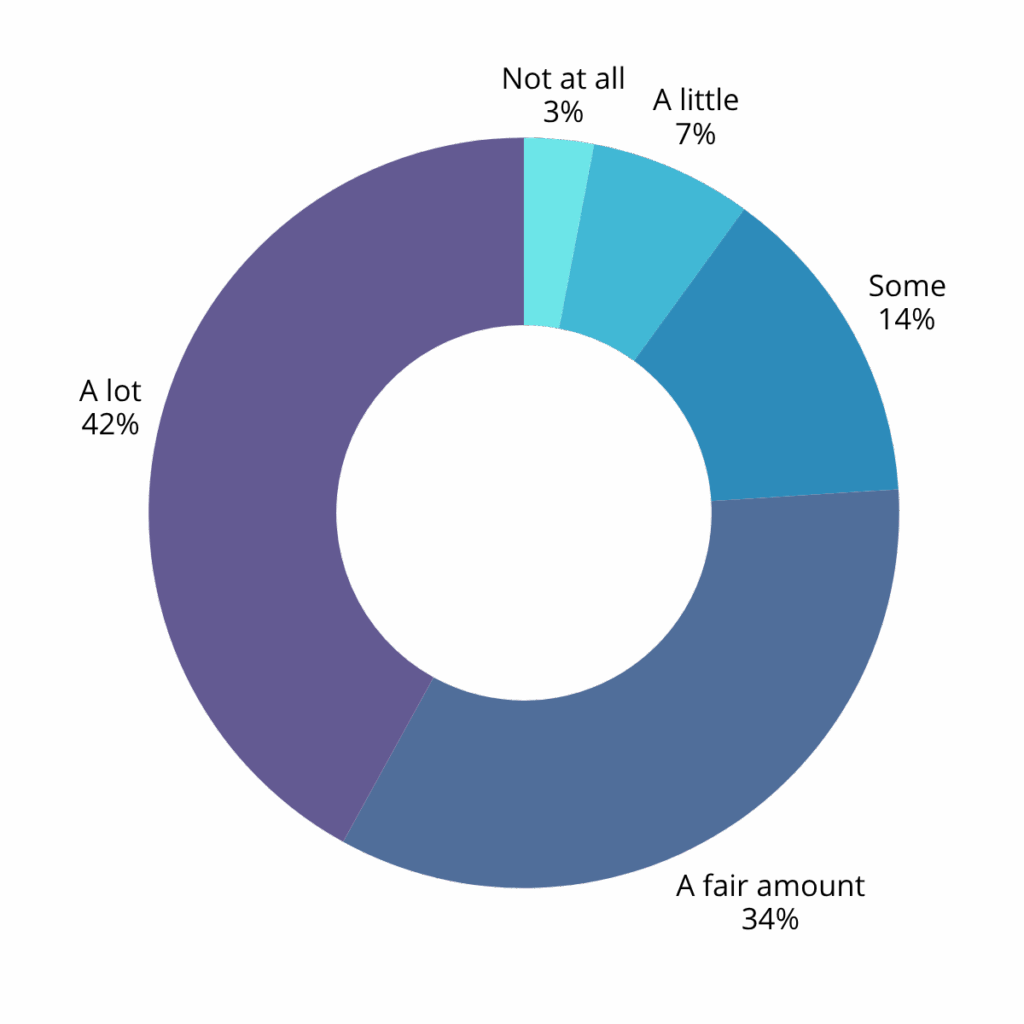
How AI Works: A Quick Primer
Artificial Intelligence refers to any computer system capable of performing complex tasks that would typically require human intelligence. It’s a generalist technology—like electricity or the internet—powered by machine learning and vast amounts of data.

What AI Is—and Is Not
AI Is:
| AI Is Not:
|
Understanding the Levels of AI Use in Education
AI can play many different roles in education—ranging from simple idea generation to fully transforming instructional workflows. Understanding these levels of use helps educators choose the right tools and approaches for your goals.
- Ideate – Use AI to spark thoughts or brainstorm broad ideas
- Generate – AI produces content or artifacts that you might edit or refine
- Engage – Actively co-working with AI during a process or workflow
- Critique – User challenges an AI output using human expertise, or seeks critique and feedback from an AI system
- Transform – AI helps reshape work or thinking in novel or personalized ways
- Extend – AI is embedded into long-term processes, workflows, or system for impact
Many of the tools used in in education (ChatGPT, Claude, Canva, Figma, MagicAI, Gemini, etc.) focus on just the ideating and generating.
Our goals at Atlas are to create tools that go beyond basic idea generation, so educators can harness AI as a true partner in teaching and learning—collaborating with it to design richer learning experiences, personalizing instruction to meet diverse student needs, and integrating it into long-term curriculum strategies. This deeper engagement and transformation not only streamlines educators’ workflows but also creates actionable insights that can drive meaningful, measurable improvements in student outcomes.
To succeed at supporting educators in this way, we're prioritizing collecting and connecting the pieces of data in an actionable way. Just because data is “there” doesn’t mean it’s immediately actionable.
Our focus is to make sure we’re collecting, sorting, arranging, and presenting data correctly before we can begin to make it actionable with relevant recommendations.
Practice Makes Progress: Try these 3 AI Prompt Frameworks with your Curriculum Planning
Step 1: Go to your favorite AI tool:
Step 2: Pick one task you currently would like help with
- Differentiating a lesson plan
- Needing help to write a curriculum unit
- Simplifying or identifying reading selections, etc.
Step 3: Use the CONTEXT Framework create an AI prompt
C | Context Describe the relevant background |
O | Objective Define the goal of your prompt |
N | Nuances Add special considerations or constraints |
T | Tone Set the style (formal, friendly, etc.) |
E | Examples Provide sample outputs |
X | Xtra Details Add additional clarifying info |
T | Type Define the response format (list, paragraph, etc.) |
CONTEXT Framework Example
- Context: The unit is focused on ecosystems, covering topics such as food chains, biodiversity, and human impact. This is part of a broader science curriculum aimed at environmental literacy
- Objective: Suggest formative assessment ideas that will help gauge students' understanding of ecosystems and their components as the unit progresses
- Nuances: Focus on low-stakes assessments that encourage student engagement and provide immediate feedback. Assessments should offer multiple means of representing understanding.
- Tone: Provide ideas in a supportive, teacher-friendly tone that is easy to implement
- Examples: Examples of formative assessments could include exit tickets, concept maps, or quick reflection exercises
- Xtra Details: Consider class sizes of about 25 students and aim to keep assessment activities short, ideally taking no more than 10 minutes
- Type: List format, with each assessment idea described in 1–2 sentences
Step 4: Use the RIF Framework to prompt AI
R | Role Specify the AI’s role or perspective to provide context for the response |
I | Instructions Clearly describe the task or what you want |
F | Format Define the structure, tone, or specific requirements for the output |
RIF Framework Example
- Role: You are an experienced curriculum developer specializing in differentiated instruction strategies for middle school mathematics
- Instructions: Suggest three differentiated strategies for teaching the concept of ratios and proportions to a diverse group of students. These strategies should accommodate varying skill levels, including students who are advanced, on grade level, and needing additional support
- Format: Provide the strategies in a numbered list, and for each, include a short description of how it addresses the needs of different learner groups. Use a clear, professional tone
Step 5: Use the Few-Shot Framework to prompt AI
| Show a Few Examples | Give 2–5 examples of the desired output, demonstrating the structure, tone, or format you want. |
| Request a Similar Response | Ask the AI to generate a similar response based on the examples. |
Few-Shot Framework Example
- Examples: Here are some example essential questions:
- How do cultural backgrounds shape individual identity, and how does society respond to differences?
- In what ways do family expectations influence personal choices?
- How do individuals balance personal beliefs with societal pressures?
- Request: Please generate three more essential questions that encourage deep reflection on identity and society, following the style and depth of the examples.
Reflect and Review on the Responses
Format: Are the outputs formatted correctly? Ask AI to revise the structure to match your desired formatting.
Voice: Does it sound like you? Ask AI to revise the language to match your voice. You can provide examples of your writing as a reference.
Congruency: How does this flow with the rest of your planning or instruction? Check that the results match the content and direction of the other template categories. Overall, does it sound like you and what you want for the unit/lesson/instructional plan?
Remember, AI is just a foundation or springboard for content moving forward; it still needs to be a reflection of you!
Current AI tools in Atlas
The current AI tools in Atlas can help you build units by generating ideas for individual elements of your unit planner. To do this, AI in Atlas uses the name of your unit, your course name and grade level, standards you have selected for the unit, the field within your unit planner that you are working in, and any specific notes you have. This application of generative AI will help curriculum writers get started in generating elements like enduring understandings or unpacking standards for content and skills, while allowing teachers to review and refine the ideas by AI in Atlas.
- Use the chat feature to work together with AI in Atlas to create unit content while saving valuable time.
- AI in Atlas is available for Lesson Planning in Atlas for schools who have subscribed to Lesson Planning in Atlas
Try It Yourself
Want to explore how AI in Atlas can help your curriculum team save time and build stronger units?
Lead your school into AI with confidence, ethics, and purpose
AI professional learning courses AI curriculum are now available through FariaLearn
